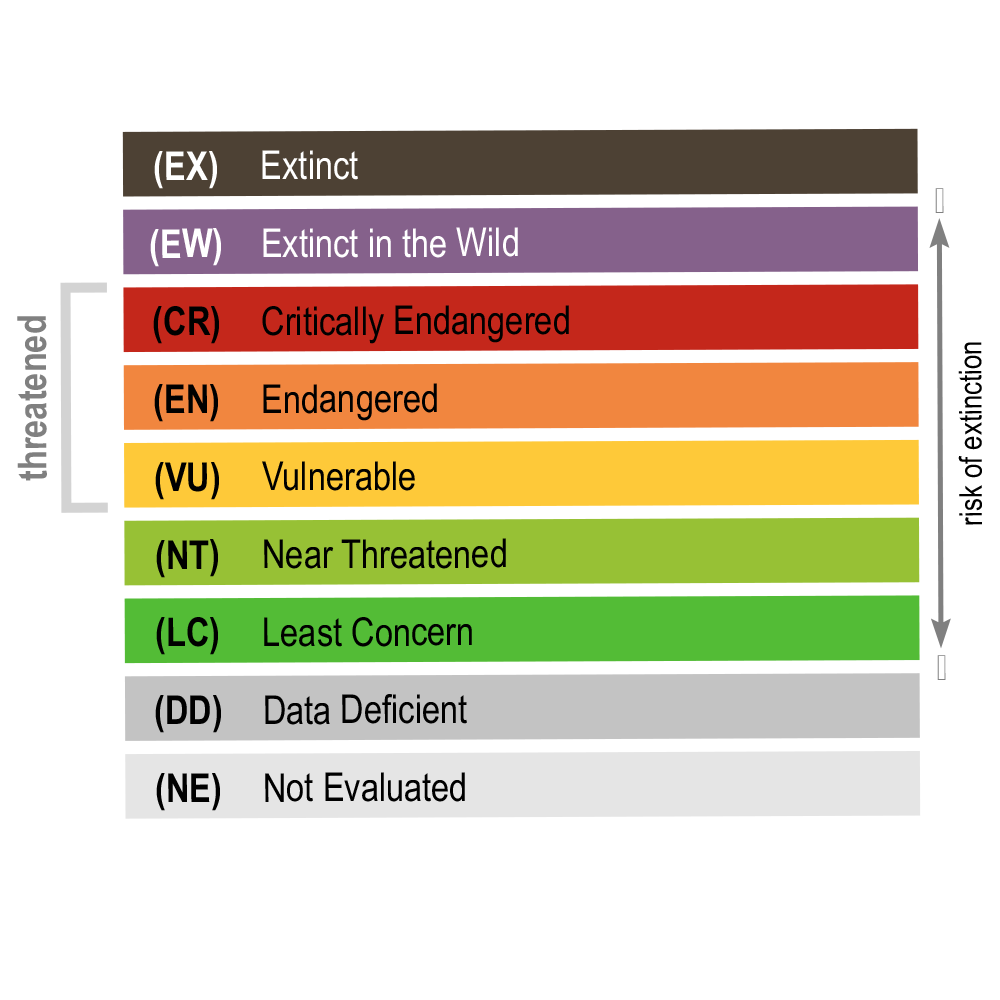Many terms get mentioned when it comes to animal conservation, especially in regard to species that are under threat from habitat loss, pollution, the illegal wildlife trade, and even extinction. But what do all those terms really mean? We break down the scale from Near Threatened to Extinct.
The International Union for Conservation of Nature (IUCN) is in charge of labeling each animal species on a sliding scale based on the threats to that species and how they affect the population dynamics. However, other countries and organizations have their own scales such as the Endangered Species Act in the USA. This means species can have multiple labels from different organizations that can reflect populations either globally, locally (such as within a state), or nationally across a country.
The IUCN scale starts with two categories, either Not Evaluated – meaning the species hasn’t been assessed at all – or Data Deficient, meaning there is not enough information on the species to make an accurate estimate on which category they should fall into.

The categories are in order of the risk of extinction.
The remaining categories go from the least serious level of threats, the population called Least Concern, all the way to the most severe meaning that that animal is Extinct – there is no reasonable doubt that the last individual has died.
The assessments for which species are put into each category is an ongoing process that is constantly updated based on scientific literature and observations of the species in the wild. Each species on the list will have a justification for why they are in each category largely based on population size and the assessment of how serious the threats are to each species. The trend in the population is also looked at to work out if the threats will cause the populations to decrease over time.
For a species in the category Least Concern, the threshold to be moved to the next, more serious category, which is Vulnerable, would be “Extent of Occurrence <20>2 [7,700 square miles] combined with a declining or fluctuating range size, habitat extent/quality, or population size and a small number of locations or severe fragmentation” and a population size thought to be “<10>10 percent in 10 years or three generations, or with a specified population structure”. These criteria are taken from the IUCN Red List page for a common woodpigeon (Columba palumbus) a species of Least Concern.
Species can be “promoted” or “demoted” across the scale. In America this year, 21 species were taken off the Endangered Species list because they were already extinct. Meanwhile, in Chad, the scimitar-horned oryx that was extinct in the wild (being kept only in private collections and zoos) was moved to endangered as a population was restored in Chad.
Extinct in the wild means that while individuals of the species still exist on Earth, there is no longer a population in the wild that can breed and increase the population of that species. This is also where the term functionally extinct is used to indicate that the remaining wild population is too far apart to breed or consists of only female animals of a species and thus more members of that population could not be created.
Source Link: Endangered, Near Threatened, Or Extinct? What's The Difference?